Some of the links in this post may be affiliate links.
If you’re looking for an unusual houseplant, look no further than the Fishbone Cactus (also known as Ric Rac Cactus or Zig Zag Cactus)! It is a striking houseplant visually, and easy to care for as well!
In this post, I will go into details on how to propagate fishbone cactus, how to care for the plant, as well as discuss flowering and other intriguing details!
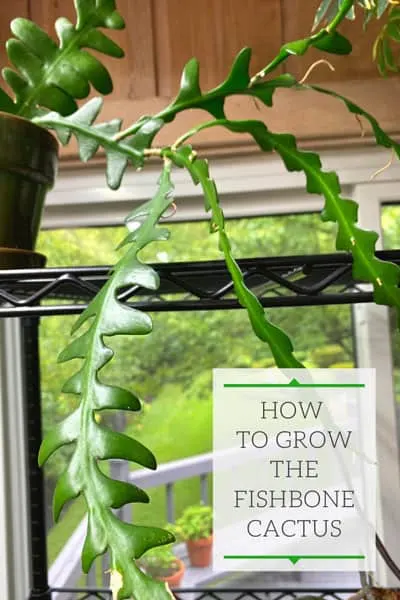
Before I go into the propagation and care, I’d like to go over a bit about the natural habitat and also talk about a couple different species that are out there.
There is a lot of confusion on the topic. They’re both considered fishbone cactus and the care is the same, but they are in fact different species!
Table of Contents
EPIPHYLLUM ANGULIGER VS. SELENICEREUS ANTHONYANUS
I know, those botanical names are a handful! Both of these species are considered Fishbone Cactus even though they are slightly different plants.
The main way to tell the difference is by looking at the flowers (if we are lucky enough for our plants to bloom!)
Take a look at the photos below. The flowers are gorgeous and only last a day, but the main way to tell the difference is in the color of the flowers.
Selenicereus anthonyanus (also classified at different points in time as Disocactus anthonyanus and Cryptocereus anthonyanus) have beautiful reddish/pink flowers.
Epiphyllum anguliger, on the other hand, has yellow and white flowers as shown below.
Zapyon / CC BY-SAThe flowers make it super easy to tell the difference. Just by looking at the foliage, it may be a little trickier.
I found a resource that visually shows photos of the foliage of both species. You can visually see a difference in the foliage, and the Selenicereus anthonyanus foliage has more distinct and thinner “fishbones.”
Based on that, I can’t quite tell which one my plant is, because I have leaves on the same plant that look a little different. Hopefully one day my plant will flower and I will finally be able to know!
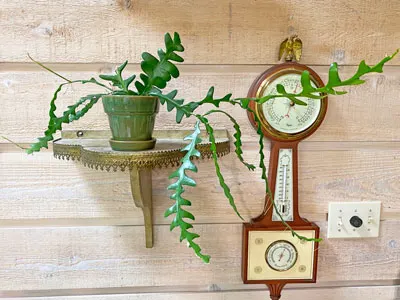
I have a hunch that it is Epiphyllum anguliger. Fortunately, the care is identical and that’s all that matters.
Both of these plants are native to Mexico and are epiphytic cacti.
FISHBONE CACTUS PROPAGATION AND CARE
HOW TO PROPAGATE
My own plant that I grow was started from cuttings that a friend sent me. I’ll briefly describe how I propagated my plant, and then talk about the care of Fishbone Cactus.
I water propagated my own plant, but you can easily place them in soil as well.
You can make several cuttings from a single leaf (it might technically be considered a modified stem) and root each one.
Just be careful though that you don’t turn the cuttings upside down as they will not root! The part of the cutting that was closest to the pot will be the end that roots.
Aim to make each cutting about 3-4 inches long or so. There is no need to make them longer. The more cuttings you have, the fuller your resulting plant will be!
Once you make your cuttings, like any succulent or cactus, you need to allow your cuttings to dry and callous over before propagating. This is to ensure that your cuttings don’t rot.
Simply let your cuttings air dry for a few days first.
After a few days, you can place them in a vase with water to root, or directly into a pot of soil. I placed mine in water as shown below.
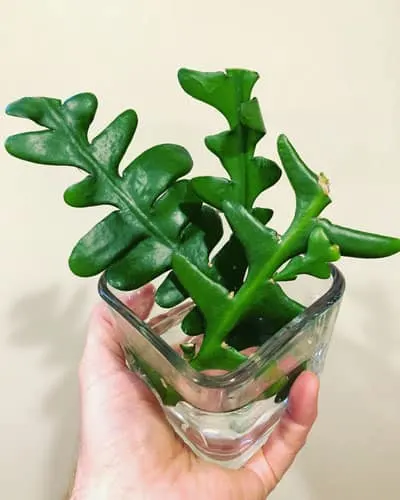
After a few weeks, or less, my cuttings rooted.
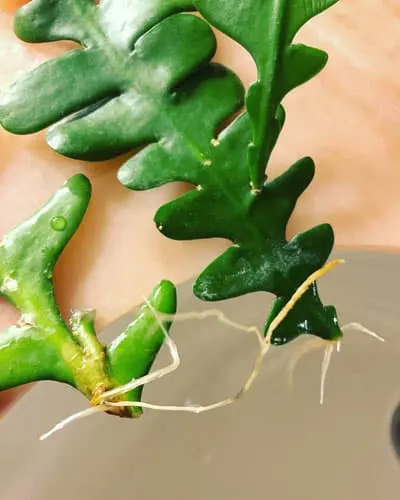
Once your roots about about an inch long or so, go ahead and plant them up into your potting mix (I’ll describe that shortly).
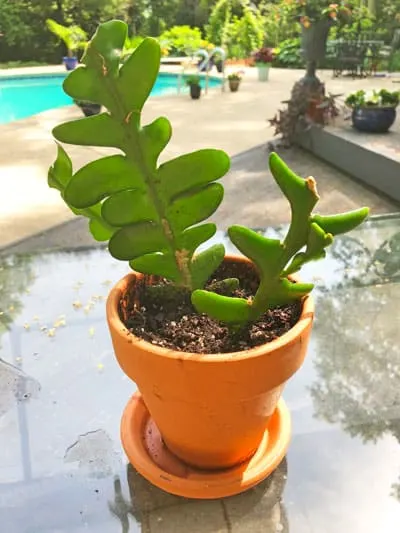
After callousing over, you could have inserted the cuttings directly into soil, instead of in water, and the cutting would root this way too. Keep the soil barely moist to encourage rooting.
Keep in mind that it is always better to propagate in Spring or Summer during the growing season. Try and avoid propagation during the winter time when plants typically aren’t doing much in the growing department.
If you are a water propagation fan, be sure not to miss my post on the best houseplants to propagate in water.
LIGHT and TEMPERATURE
My own plant grows in front of an Eastern facing window. These plants grow very well indoors with a few hours of sun, but don’t overdo it. I’d recommend placing your fishbone cactus right in front of an Eastern window or Western window.
Avoid strong, mid-day sun.
These plants need warm temperatures to thrive, so keep your indoor temperatures comfortable. Never allow temperatures to fall below 50F (10C) so keep this in mind if you summer your houseplant outdoors.
WATERING
Always water thoroughly and allow all excess water to escape the drainage hole. Remember, these are epiphytes so they should never sit in water.
During the growing season, allow the top inch of the potting soil to dry out before watering again.
During the winter time when temperatures may be cooler indoors and there is less light, you can allow your soil to dry out a bit more (even completely) before watering again.
POTTING MIX
You can use a variety of potting mixes as long as your potting mix is extremely well drained.
For my own plant, I used a succulent mix to which I added some 1/4″ pumice to increase the drainage.
You can use whatever you have on hand though.
If you mix together 2 to 3 parts succulent mix with 1 part of either perlite or pumice, this will work beautifully. You can even use 1 part orchid bark instead of the perlite or pumice. Or a combination of all of these.
The goal is to have a very quickly draining potting mix and there isn’t one magic potting mix. Many types will work!
If you’re looking for an amazing potting mix that you can use straight out of the bag for your Ric Rac Cactus, check out the Tropical Succulent Soil Blend from Oh Happy Plants. This is an amazing mix and you will get 10% off at checkout automatically if you use my link.
FERTILIZER
I use my favorite all-purpose fertilizer called Dyna-Gro Grow. It is an AMAZING, premium fertilizer that contains all the micro and macro nutrients needed for plant growth.
I simply add 1/4 teaspoon per gallon of water and use this every time I water.
AERIAL ROOTS
You may be wondering why you’re seeing aerial roots on your plant.
Plants grow aerial roots for different reasons, and it is very normal for epiphytes to grow aerial roots.
Take a look at the aerial roots on my plant.
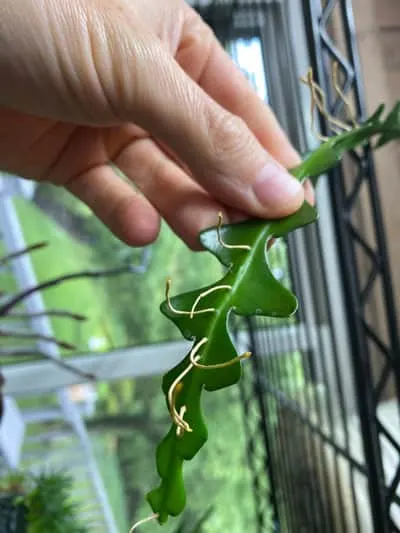
Epiphytes are plants that grow on other plants (such as on trees) for support. They use their aerial roots to attach onto their host tree, but also to gather nutrients and water from the surrounding area, and from organic debris that may be laying around.
So when you do see aerial roots on your fishbone cactus, it is perfectly normal. The worse case is that maybe it is signaling that your plant is dry and needs to be watered. Be sure to check the potting medium and give it a good water if the soil just happens to be bone dry.
And don’t forget that you should be fertilizing as a part of your care routine. I highly recommend Dyna-Gro Grow!
Do you have a fishbone cactus? Comment below. I’d love to hear!

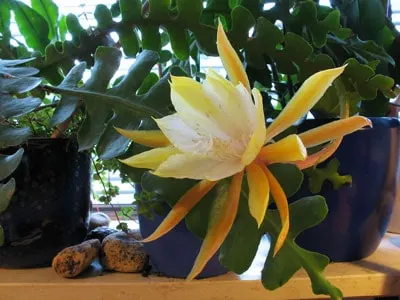
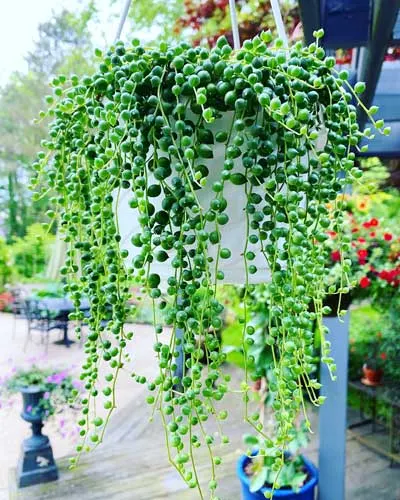
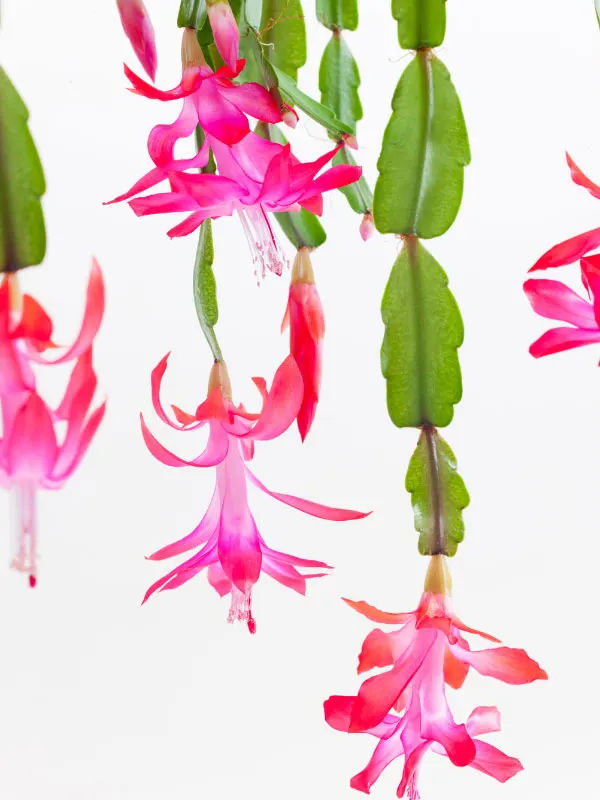
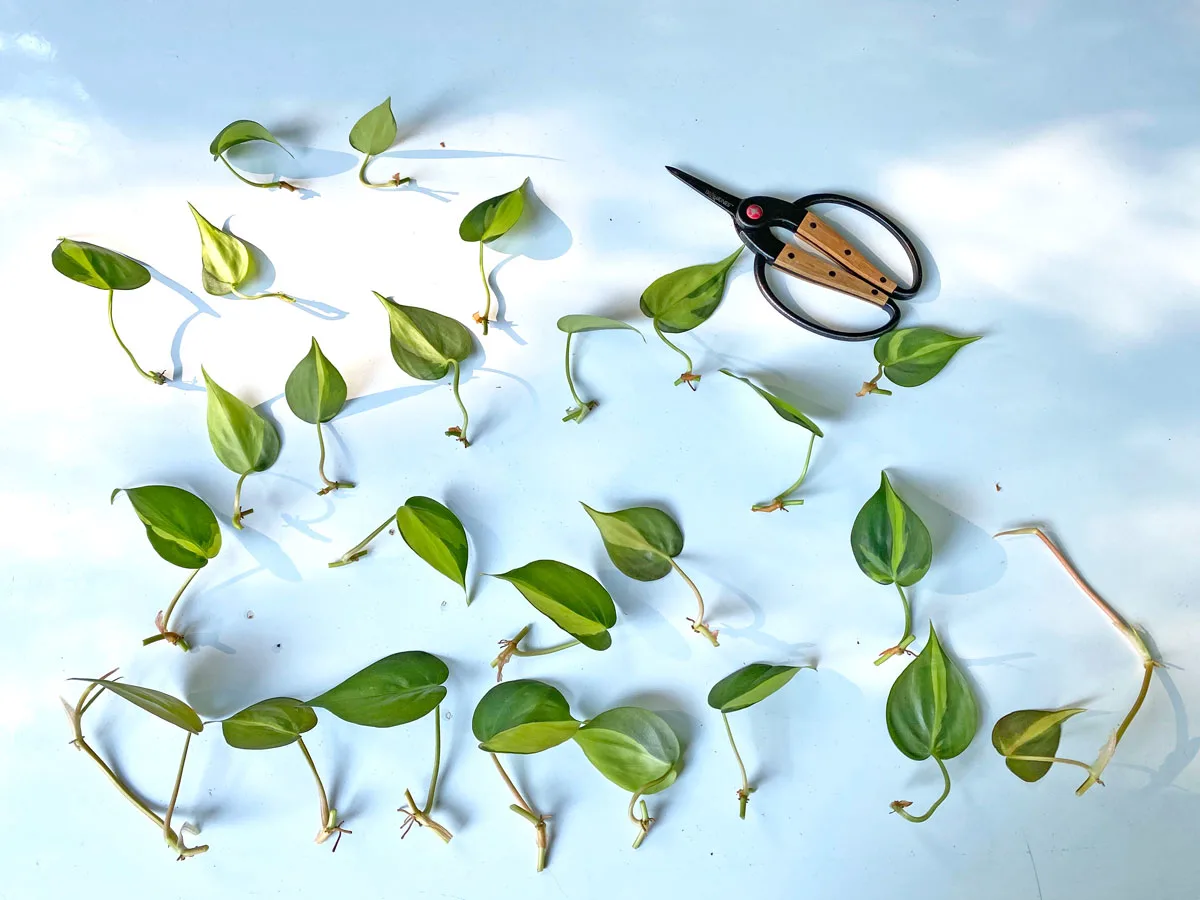
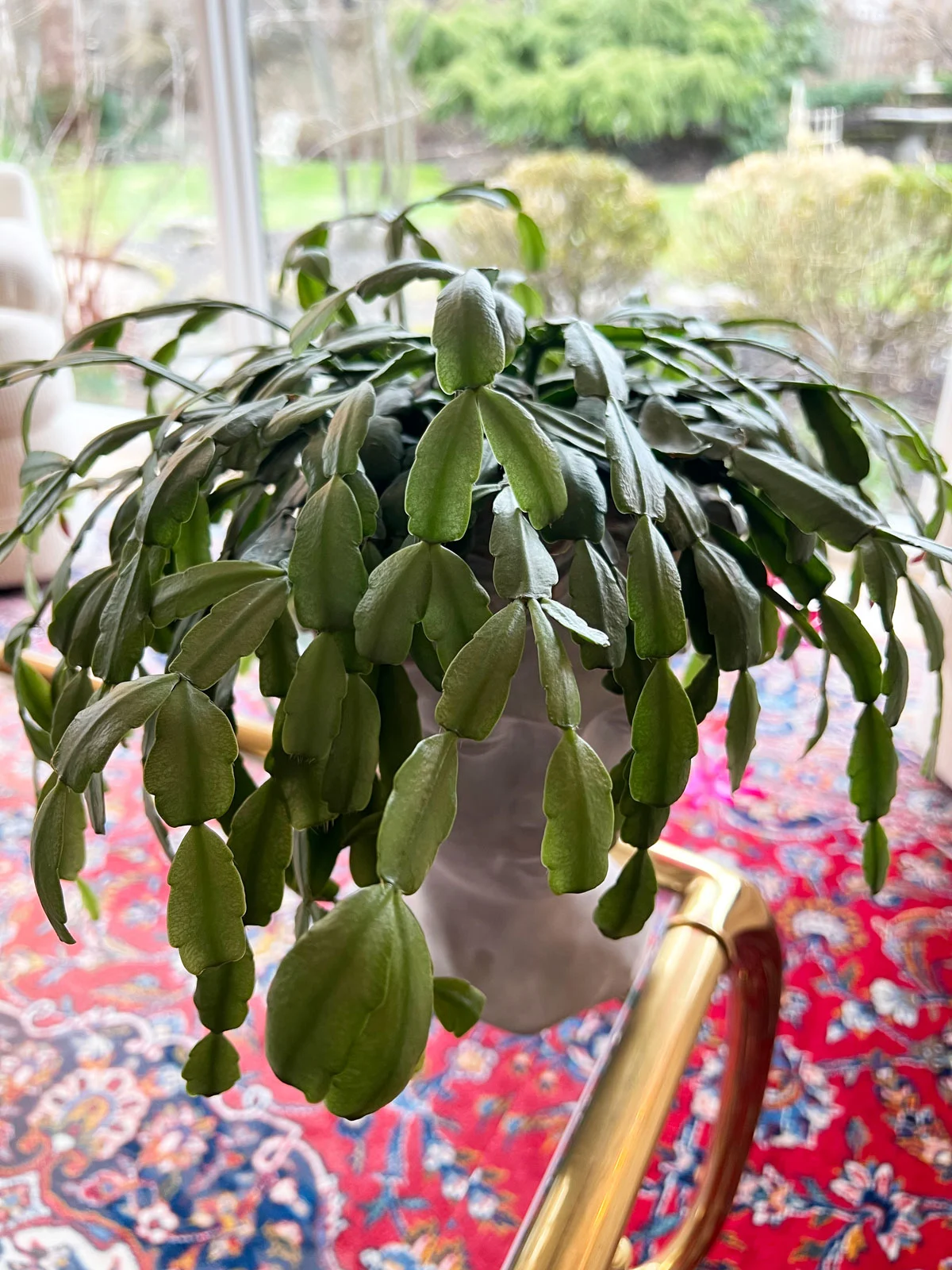
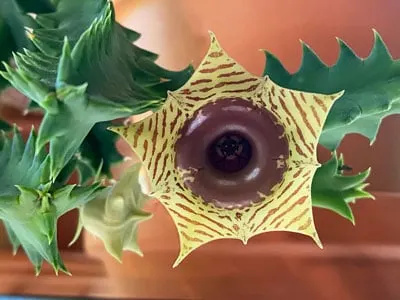
Margaret
Sunday 15th of September 2024
Thank you for such clear, easy to follow instructions on care & propagation! My fishbones have the typical flat squiggly arms, but they are also putting out what looks like thin rope like arms. Initially I thought they would turn flat and squiggly when they gained length but they have just gotten longer and remained thin and shaped sort of like green, spiky spaghetti noodles. Have you ever had this happen, and if so, do you know what I am doing wrong? Have a great day.
Raffaele Di Lallo
Monday 16th of September 2024
Glad you enjoyed the post Margaret! I'm wondering if your plant maybe isn't getting enough light? Can you describe in detail where you have your plant in relation to a window? How far from the window, what exposure, etc.
Donna
Wednesday 17th of July 2024
My husband calls me the plant killer but, I'm not that bad. I am having an issue with this fishbone plant. It was growing great then all of a sudden, I noticed the bottom where it meets the dirt the stems meet started turning brown and getting mushy. I stopped watering it and let it dry out but, then it looked like the stems were drying up and breaking off. I just repotted but didn't water yet. I also repotted some smaller pieces to root. You said to dry them a few days first? Should I take them out of the pot? Help!! I love this plant, not sure what to do at this point. Almost thinking of taking it to a nursery for help. Any advice?
Raffaele Di Lallo
Thursday 18th of July 2024
Hi Donna. Did the soil stay wet for too long? I'd need more details. Was it in a pot with drainage holes? If you are propagating, yes, let the segments dry out before propagating. For the plant itself, I would probably take the plant out of the pot and observe the roots to see if they rotted, and then clean up the root system. You may need to pot it in a smaller pot if a lot of the root system rotted. If the potting medium was not well drained, use my recommendations in the post.
Lisa
Tuesday 17th of October 2023
I do and it’s going to flower, I have 3 flower’s coming
Raffaele
Wednesday 18th of October 2023
Wonderful!
Stacy
Saturday 16th of September 2023
I just bought one and what a cool looking plant 🪴! Have place in eastern window anticipating on seeing it grow.
Raffaele
Monday 18th of September 2023
Good luck Stacy! They're very cool plants :-)
Melissa
Wednesday 13th of September 2023
A friend gave me a leaf of her cactus and told me that i could just plant it in soil and it would grow. I did that and now I have small spiky cacti growing from each of the spines of the leaf. They look nothing like the leaf I planted. Should I just leave it or should I cut the leaf into sections and plant under the soil? Thank you!
Raffaele
Wednesday 13th of September 2023
I would just leave it! Unless you wanted a fuller plant faster...in which case, you can take more cuttings! Spring would be best to propagate though.